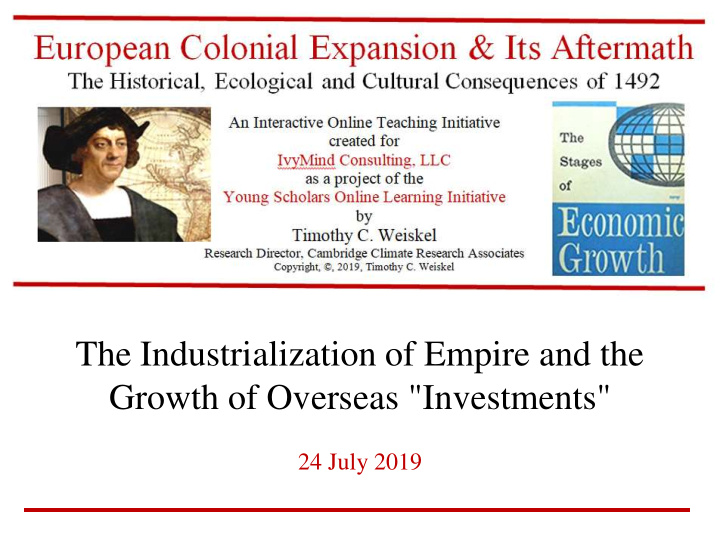



Fortifications were designed to protect trading enclaves from rival European powers & to “store” slaves until departure
Military conflict took the form of naval battles between rival European powers to control the coastal enclaves or island fortresses.
Europeans fought one another for the control over coastal enclaves and dominance of the sea lanes for the sale of slaves to the Americas.
Travel books and published memoires written by sea captains or company directors gave great detail about the slave trade and the preparations for its conduct.
Some books included detailed maps of the coast with much information about the purchase of slaves and specific information about the coastal forts.
Some accounts include information about the plantations of crops from the “New World” that were grown to feed slaves in the Middle Passage.”
Tim Weiskel - 76
What do you suppose the Portuguese, Dutch, English, and French were introducing to their gardens around their forts in West Africa?
What was most needed? What was this aspect of the “Columbian Exchange?”
What was most needed? What was this aspect of the “Columbian Exchange?” What were its consequences?
Caribbean in Trans-Atlantic System (Triangular Trade)
Caribbean in Trans-Atlantic System (Triangular Trade)
Caribbean in Trans-Atlantic System (Triangular Trade)
Trans-Atlantic System in Wider World System
Trans-Atlantic System in Wider World System Sugar
Trans-Atlantic System in Wider World System Sugar
Trans-Atlantic System in Wider World System Sugar
Trans-Atlantic System in Wider World System Sugar
Trans-Atlantic System in Wider World System Sugar Tea & Tea & Textiles Textiles
Excerpt from https://environmentaljusticetv.wordpress.com/2017/11/19/bbc-empire- episode-4-making-a-fortune-jeremy-paxman/
Trans-Atlantic System in Wider World System Sugar Tea “China Tea Textiles Trade” Textiles & & Porcelain Porcelain + Silk + Silk
Trans-Atlantic System in Wider World System Sugar Tea “China Tea Textiles Trade” Textiles & & Porcelain Porcelain + Silk + Silk
Trans-Atlantic System in Wider World System “King Cotton” Sugar Tea “China Tea Textiles Trade” Textiles & & Porcelain Porcelain + Silk + Silk
Characteristics of the Emerging “World System” cc
Characteristics of the Emerging “World System” – 1492 to “present” Understanding “Structural History” Two Approaches to the Study of History: • Event-oriented history • Structural history • analyzes the underlying structures that evolve in society
Characteristics of the Emerging “World System” – 1492 to “present” Looking at the evolving “structure of the World System” From 1492 to the “present” Consider the “Circles” the “Lines” And the “Shapes”
Characteristics of the Emerging “World System” – 1492 to “present” 7 Key components of emerging “World System”
Characteristics of the Emerging “World System” – 1492 to “present” 7 Key components of emerging “World System” Maritime Trading “Enclaves”
Recommend
More recommend